Comments / Questions (17)
![]() Patricia wrote:
Patricia wrote:
Bonjour Faut il faire la séparation su corps et des manches sur le dernier tour de A2 ou sur le premier tour de A1 ? bien cordialement.
17.11.2025 - 18:19DROPS Design answered:
Bonjour Patricia, A.2 doit avoir été tricoté 2 fois avant la division, vérifiez vos mesures, et ajustez si besoin pour diviser soit au dernier tour de A.2 soit en tricotant A.1. Bon tricot!
18.11.2025 - 08:35
![]() Patricia wrote:
Patricia wrote:
Bonjour Faut-il faire la séparation du corps et des manches sur le dernier rang de A2 ou sur le premier rang A1 ? Bien cordialement
17.11.2025 - 18:17
![]() Simona wrote:
Simona wrote:
Hello, when I continue to increase for raglan on front piece and back piece, without sleeves, the raglan seam is crooked. What I am doing wrong, please? Thank you for your help. Simona
11.10.2025 - 17:36DROPS Design answered:
Hi Simona, it looks like this. It will be slightly visible when you join after you divide for the body and sleeves. Happy knitting!
16.11.2025 - 08:37
![]() Evelyne Serpollier wrote:
Evelyne Serpollier wrote:
Combien de cm dois t on faire en jersez avant le point fantaisie
19.09.2025 - 14:08DROPS Design answered:
Bonjour Mme Serpollier, on tricote le point fantaisie dès le début de l'empiècement, directement après le col. Bon tricot!
24.09.2025 - 07:04
![]() Serpollier Evelyne wrote:
Serpollier Evelyne wrote:
Combien de cm fait on avant de faire le point fantaisie taille m merci
18.09.2025 - 20:02DROPS Design answered:
Bonjour Mme Serpollier, vous faites 9 cm en côtes, ensuite vous commencez a augmenter pour le raglen et le point fantaisie, en meme temps. Bon tricot!
18.09.2025 - 20:55
![]() Małgorzata wrote:
Małgorzata wrote:
Sweter jeszcze raz wyprałam, tym razem w pralce na 40 stopniach i z wirowaniem. Włożyłam go wcześniej do worka aby zminimalizować tarcie. Udało się, wrócił do pierwotnego rozmiaru. Robiłam go z drops lima. Próbka była taka jak we wzorze ale nie uprałam jej niestety. No, ale teraz już jest wszystko ok. Dziękuję.
09.07.2025 - 08:09DROPS Design answered:
Witaj Małgosiu, bardzo się cieszę. Powodzenia w Twoich kolejnych projektach!
09.07.2025 - 08:21
![]() Małgorzata wrote:
Małgorzata wrote:
Dziękuję za piękny wzór. Właśnie ukończyłam sweter dla męża. Zablokowałam go w bardzo letniej wodzie, bez detergentów. Wysuszył się bez wykręcania rozłożony swobodnie na stole. Pomimo moich starań sweter bardzo się rozciągnął. Jestem załamana, czy można go jakoś naprawić aby osiągnął rozmiar z przed blokowania? Dziękuję.
07.07.2025 - 20:13DROPS Design answered:
Witaj Małgorzato, można spróbować uprać jeszcze raz, ale nie wiem czy to pomoże. Sweter jest wykonany od góry, więc łatwo możesz skrócić zarówno body jak i rękawy. Gorzej z podkrojami pach, ale i to da się zrobić. Napisz jeszcze z jakiej włóczki wykonałaś sweter, na jakich drutach wykonałaś próbkę i czy była zgodna. Pozdrawiamy!
08.07.2025 - 08:48
![]() Evelyne FOURNIER wrote:
Evelyne FOURNIER wrote:
Je dois recommencer ce pull, peut être ai-je mal compris les données des mesures. A quoi correspondent les mesures de la deuxième ligne au bas du modèle : 46-50-53 etc, me donner le détail si possible. Merci pour votre compréhension. Cordialement,
21.05.2025 - 11:24DROPS Design answered:
Bonjour Mme Fournier, les indications en bas du schéma correspndent à la largeur la plus petite du pull = soit 46 à 70 cm, en bas pour ce modèle ; les 48-72 cm juste au-dessus correspondent à la largeur la plus grande, après la division des manches. Bon tricot!
21.05.2025 - 13:11
![]() Evelyne FOURNIER wrote:
Evelyne FOURNIER wrote:
Merci pour votre réponse, toutefois, il est indiqué que l\'on doit tricoter les jetés à l\'endroit. Qu\'entendez vous par tricoter ensuite les nouvelles mailles en jersey ? Cela veut il dire qu\'au rang suivant, on doit tricoter les mailles obtenues par le jeté à l\'endroit ? Je veux être certaine d\'avoir bien compris avant de me lancer dans l\'élaboration de ce pull. Merci pour votre compréhensoin
07.03.2025 - 09:07DROPS Design answered:
Bonjour Mme Fournier, la correction vient juste d'être faite, vous tricotez les jetés torse à l'endroit au tour suivant, puis, par la suite, vous tricotez les nouvelles mailles au point fantaisie pour que ce dernier s'élargisse (en conservant toujours les 2 m jersey pour les raglans). Bon tricot!
07.03.2025 - 09:59
![]() Fournier Evelyne wrote:
Fournier Evelyne wrote:
Comment tricote t'on les augmentations (jetés) raglan en fonction du point du pull harbor horizon quand le jeté tombe sur une maille envers, (droite et gauche) ?
26.02.2025 - 11:01DROPS Design answered:
Bonjour Mme Fournier, tricotez ce jeté torse, soit à l'endroit soit à l'envers, en fonction de la maille suivante/précédente pour que le motif continue (je vais demander un ajustement de la description des augmentations, merci pour l'info). Bon tricot!
26.02.2025 - 17:34
Harbor Horizon#harborhorizonsweater |
|||||||
 |
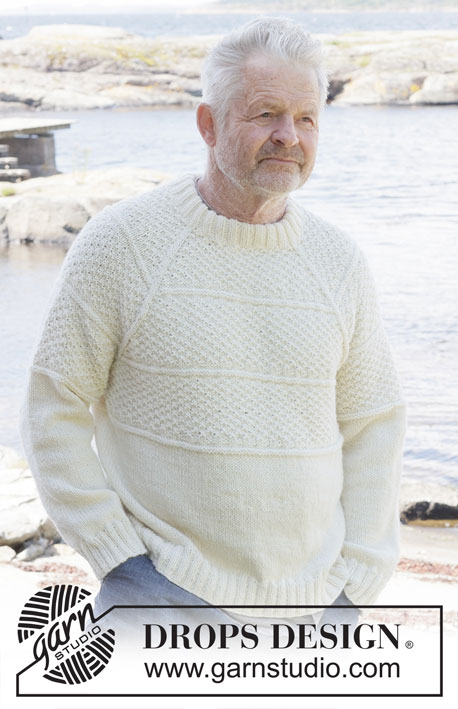 |
||||||
Knitted jumper for men in DROPS Lima or DROPS Fiesta. Piece is knitted top down with raglan, relief pattern and double neck edge. Size: S - XXXL
DROPS 251-2 |
|||||||
|
------------------------------------------------------- EXPLANATION FOR THE PATTERN: ------------------------------------------------------- PATTERN: See diagrams A.1 and A.2. Diagrams show all rows in pattern seen from the right side. Work pattern as follows (pattern continues from yoke over on body and sleeves): Work A.1 for 8-9-10-11-12-13 cm, work A.2 Work A.1 for 9-10-10-11-12-13 cm, work A.2 Work A.1 for 9-10-10-11-12-13 cm, work A.2 Then work piece in stocking stitch. RAGLAN: Increase 1 stitch by making 1 yarn over after/before 2 stitches in stocking stitch (marker thread is between these 2 stitches). On next round work yarn overs as explained below: BEFORE MARKER THREAD: Slip stitch off left needle and put it back on left needle but the opposite way (insert left needle in from behind when slipping it back on needle). Knit yarn overs in front loop of stitches to avoid holes. Then work the new stitches in pattern. AFTER MARKER THREAD: Knit yarn overs in back loop of stitches to avoid holes. Then work the new stitches in pattern. DECREASE TIP-1 (applies to sides of body): Decrease 1 stitch on each side of each marker thread as follows - remember to adjust decreases according to pattern: Work until 4 stitches remain before first marker thread, knit 2 / purl together, work 4 stitches (marker thread is between these 4 stitches), slip 1 stitch knitwise, knit/purl 1, pass slipped stitch over stitch worked (= 2 stitches decreased), repeat decrease at the other marker thread (= 4 stitches decreased in total). DECREASE TIP-2 (applies to mid under sleeves): Decrease 1 stitch on each side of marker thread as follows - remember to adjust decreases according to pattern: Work until 2 stitches remain before stitches with marker thread, knit/purl 2 together, marker thread is here, slip 1 stitch knitwise, knit/purl 1, pass slipped stitch over stitch worked (= 2 stitches decreased). ------------------------------------------------------- START THE PIECE HERE: ------------------------------------------------------- JUMPER - SHORT OVERVIEW OF THE PIECE: In this pattern needles of different length have been used, begin with fitting length for number of stitches and switch as needed. Work neck edge and yoke in the round on circular needle from right shoulder back, and work top down. When yoke is done, divide piece for body and sleeves. Work body down wards in the round on circular needle while putting the sleeves aside. Then work sleeves downwards in the round on needle. Fold the neck edge double against the wrong side and fasten. NECK EDGE: Cast on 112-112-120-120-128-136 stitches on circular needle size 4 mm with DROPS Lima or DROPS Fiesta. Switch to circular needle size 3 mm (cast on on a larger needle to get an elastic cast-on edge). Work rib as follows: Knit 1, * purl 2, knit 2 *, work from *-* until 3 stitches remain, purl 2 and knit 1. Continue rib in the round like this until neck edge measures 9-9-9-10-10-10 cm. The neck edge is later folded in towards wrong side and assembled to form a neck edge of approx. 4½-4½-4½-5-5-5 cm. Beginning of round is at right shoulder at the back. Insert 1 marker after the first 40-40-42-42-44-46 stitches on round (= approx. mid front), measures piece from this marker. YOKE: Insert 4 markers in the piece without working the stitches, insert markers between 2 knit stitches, and these 2 stitches are called raglan stitches and worked in stocking stitch. Insert 1st marker thread at the beginning of round, count 24 stitches (= sleeve), insert 2nd marker thread before next stitch, count 32-32-36-36-40-44 stitches (= front piece), insert 3rd marker thread before next stitch, count 24 stitches (= sleeve), insert 4th marker thread before next stitch, 32-32-36-36-40-44 stitches remain after last marker thread (= back piece). Switch to circular needle size 4 mm. Then work PATTERN in the round - read explanation above, AT THE SAME TIME increase for RAGLAN - read explanation above. Remember to work raglan stitches in stocking stitch. Work in the round in pattern and increase for raglan every other round 22-24-26-26-28-30 times in total = 288-304-328-328-352-376 stitches (= 8 stitches increased on every increase round). Remember to follow the knitting tension! Increases for sleeve are now done, but continue to increase for raglan on front piece and back piece on every other round 6-8-6-10-10-12 more times = 312-336-352-368-392-424 stitches on needle. Work without increasing until piece measures 21-23-24-26-28-30 cm from marker after neck edge - make sure that A.2 is completed for a 2nd time. Now divide yoke for body and sleeves. DIVIDING FOR BODY AND SLEEVES: Pattern continues over body and sleeves - raglan stitches are now worked into pattern. AT THE SAME TIME as next round is worked divide yoke for body and sleeves as follows: Work 1 stitch, slip the next 66-70-74-74-78-82 stitches on a thread for sleeve, cast on 10-10-14-18-18-22 new stitches on needle (= in the side mid under sleeve), work 90-98-102-110-118-130 stitches in pattern as before (= front piece), slip the next 66-70-74-74-78-82 stitches on a thread for sleeve, cast on 10-10-14-18-18-22 new stitches on needle (= in the side mid under sleeve) and work the last 89-97-101-109-117-129 stitches in pattern as before (= back piece). Finish body and sleeves separately. Now measure piece from here! BODY: = 200-216-232-256-272-304 stitches. Insert 1 marker thread in each side on body, in the middle of the 10-10-14-18-18-22 stitches cast on under each sleeve and move the marker threads when working, use the marker threads when decreasing in the sides on body. Work until the first marker thread, round begins here. Work pattern as before, AT THE SAME TIME when piece measures 11-11-11-11-12-13 cm from division, decrease 1 stitch on each side of both marker threads – read DECREASE TIP-1 (= 4 stitches decreased) = 196-212-228-252-268-300 stitches. Remember that when A.2 has been worked 3 times, continue the body in the round in stocking stitch. When piece measures 22-22-22-22-23-24 cm, decrease in the sides 1 more time = 192-208-224-248-264-296 stitches. Work until piece measures approx. 54-56-57-59-61-63 cm from marker mid front. Switch to circular needles size 3 mm, work rib (= knit 2/purl 2) while AT THE SAME TIME increasing 40-44-44-48-52-56 stitches evenly on 1st round = 232-252-268-296-316-352 stitches. When rib measures 5-5-5-6-6-6 cm, cast off with knit over knit and purl over purl. Jumper measures 59-61-63-65-67-69 cm from marker mid front and approx. 64-66-68-70-72-74 cm from the top of shoulder. SLEEVES: Slip 66-70-74-74-78-82 sleeve stitches from one thread on to circular needle size 4 mm and pick in addition up 1 stitch in each of the 10-10-14-18-18-22 stitches cast on under sleeve = 76-80-88-92-96-104 stitches. Insert 1 marker thread in the middle of the 10-10-14-18-18-22 new stitches under sleeve - round begins at the marker thread. Continue the pattern from yoke in the round on needle - AT THE SAME TIME when sleeve measures 2 cm from division, decrease mid under sleeve – read DECREASE TIP -2 and decrease as follows: Decrease 2 stitches every 3½-3-2½-2-2-1½ cm 12-13-16-17-19-22 times in total = 52-54-56-58-58-60 stitches. Work until sleeve measures 47-46-44-43-41-39 cm from division. Switch to double pointed needles size 3 mm and work rib (= knit 2/purl 2) while AT THE SAME TIME increasing 12-10-12-14-14-12 stitches evenly on 1st round = 64-64-68-72-72-72 stitches. When rib measures 5-5-5-6-6-6 cm, cast off with knit over knit and purl over purl. Sleeve measures approx. 52-51-50-49-47-45 cm from division. ASSEMBLY: Fold rib at the top of neck down on inside of garment. Fasten rib to get a double neck edge. To avoid a tight neck edge that sticks out it is important to keep the seam elastic. |
|||||||
Diagram explanations |
|||||||
|
|||||||
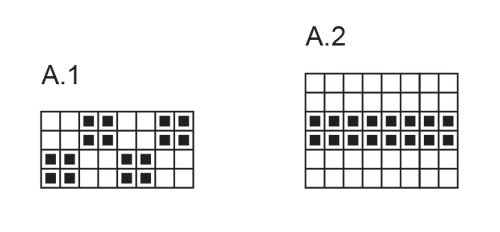 |
|||||||
 |
|||||||
Have you finished this pattern?Tag your pictures with #dropspattern #harborhorizonsweater or submit them to the #dropsfan gallery. Do you need help with this pattern?You'll find 26 tutorial videos, a Comments/Questions area and more by visiting the pattern on garnstudio.com. © 1982-2025 DROPS Design A/S. We reserve all rights. This document, including all its sub-sections, has copyrights. Read more about what you can do with our patterns at the bottom of each pattern on our site. |
|||||||







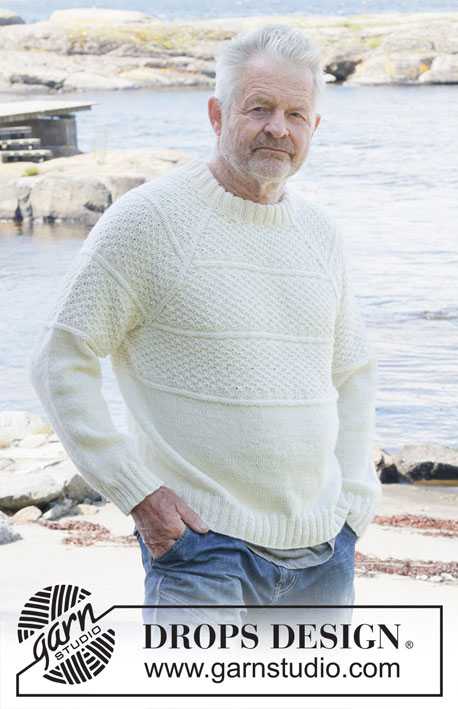
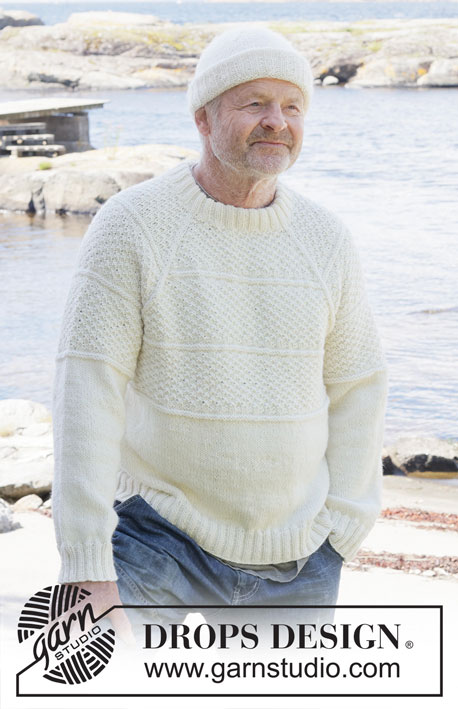
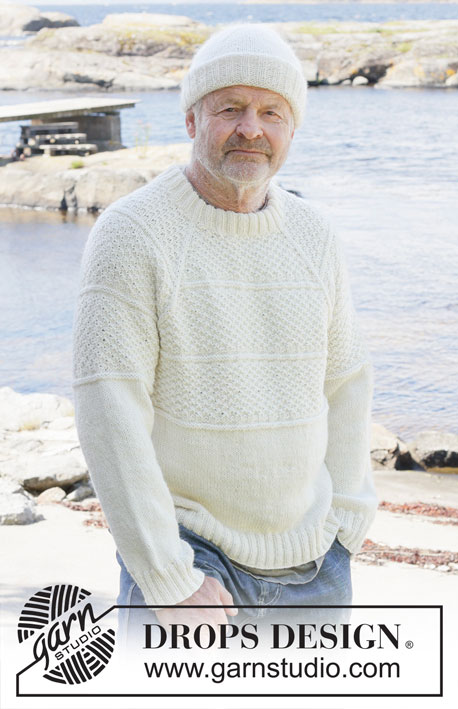

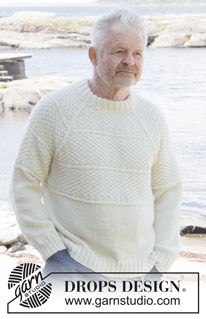
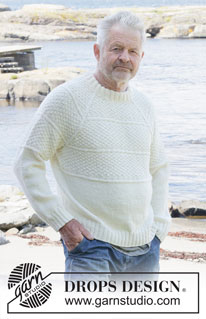
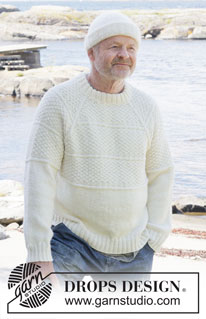
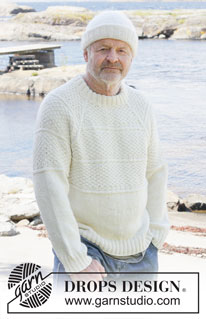

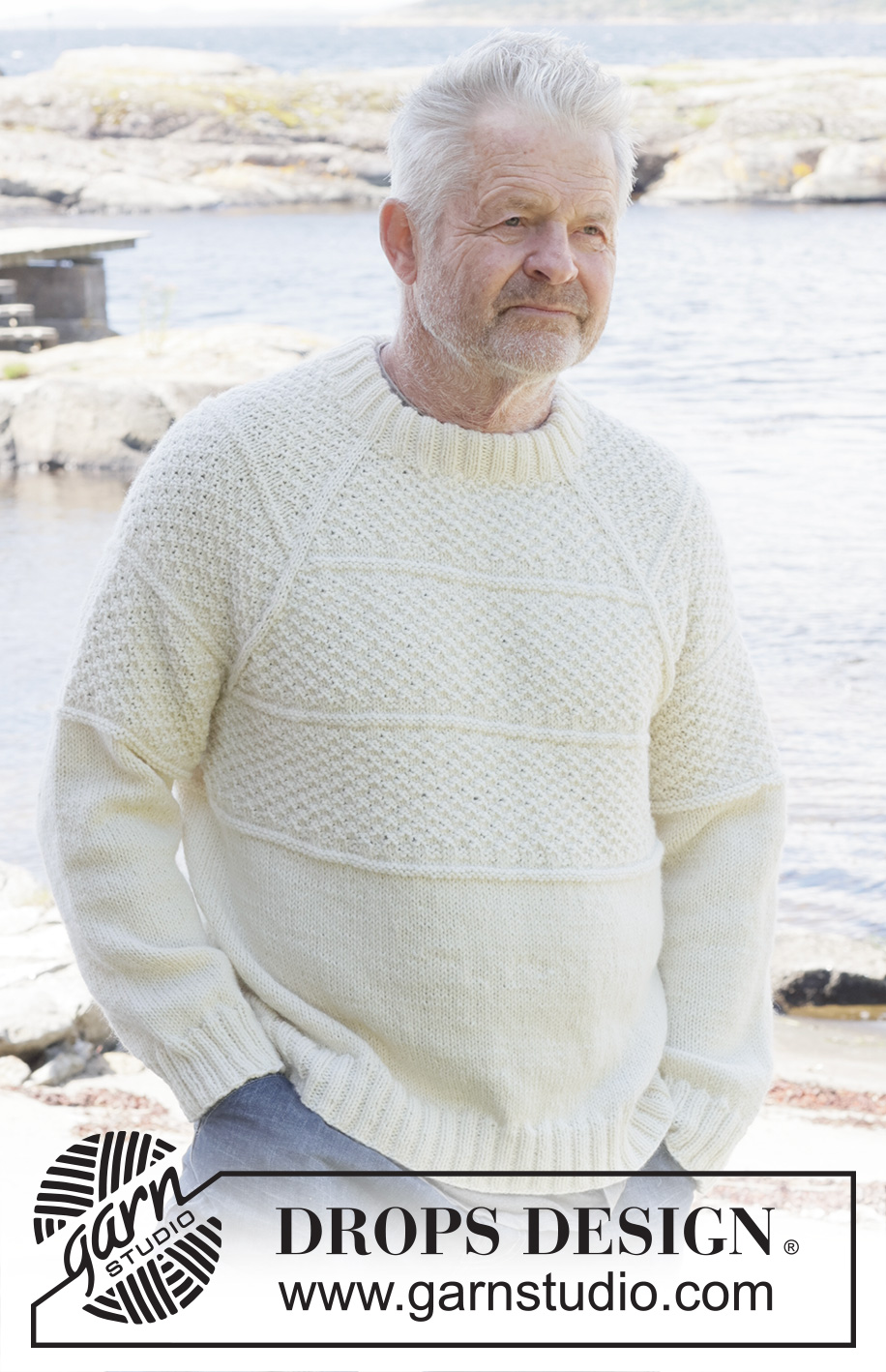
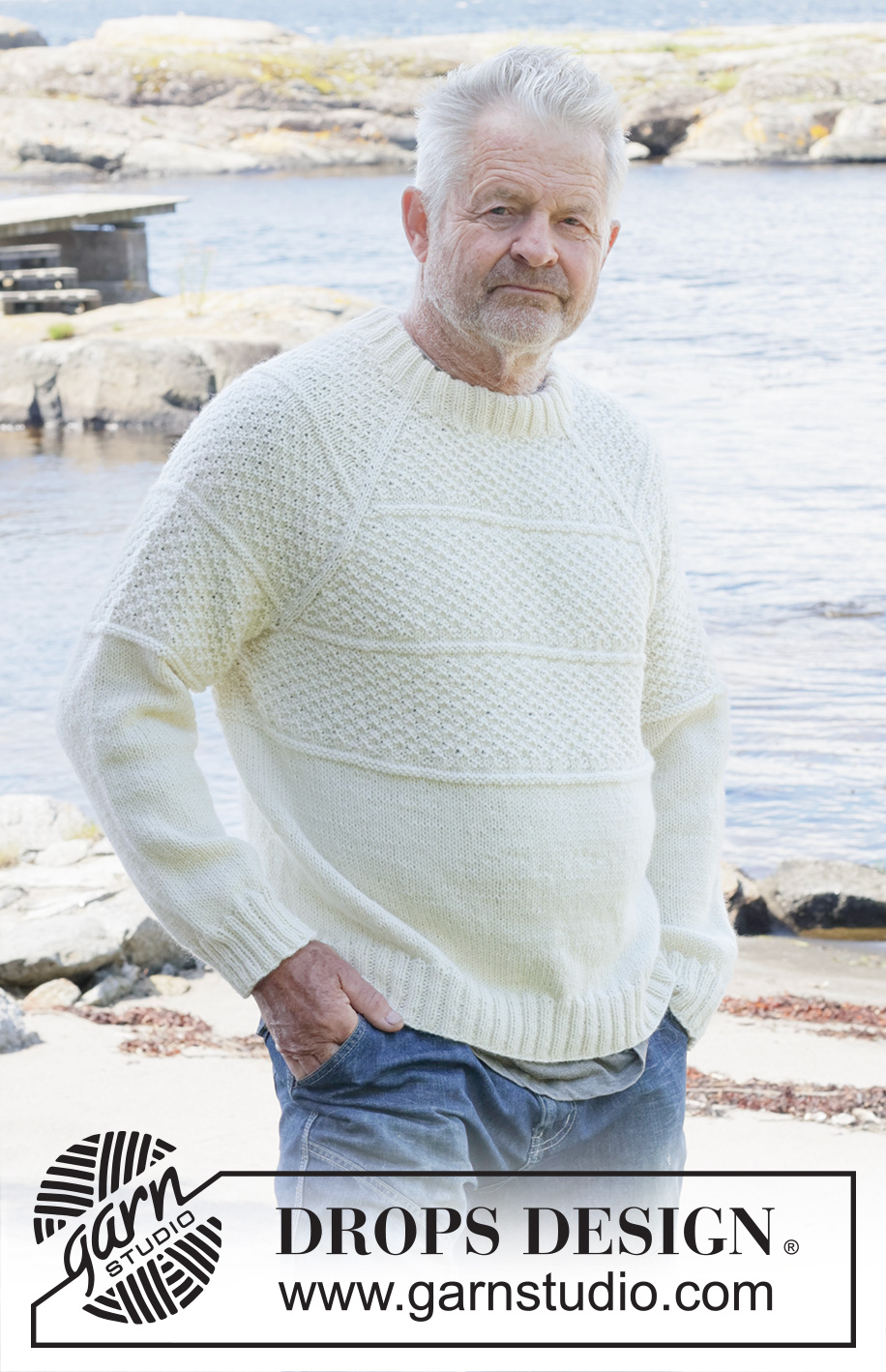
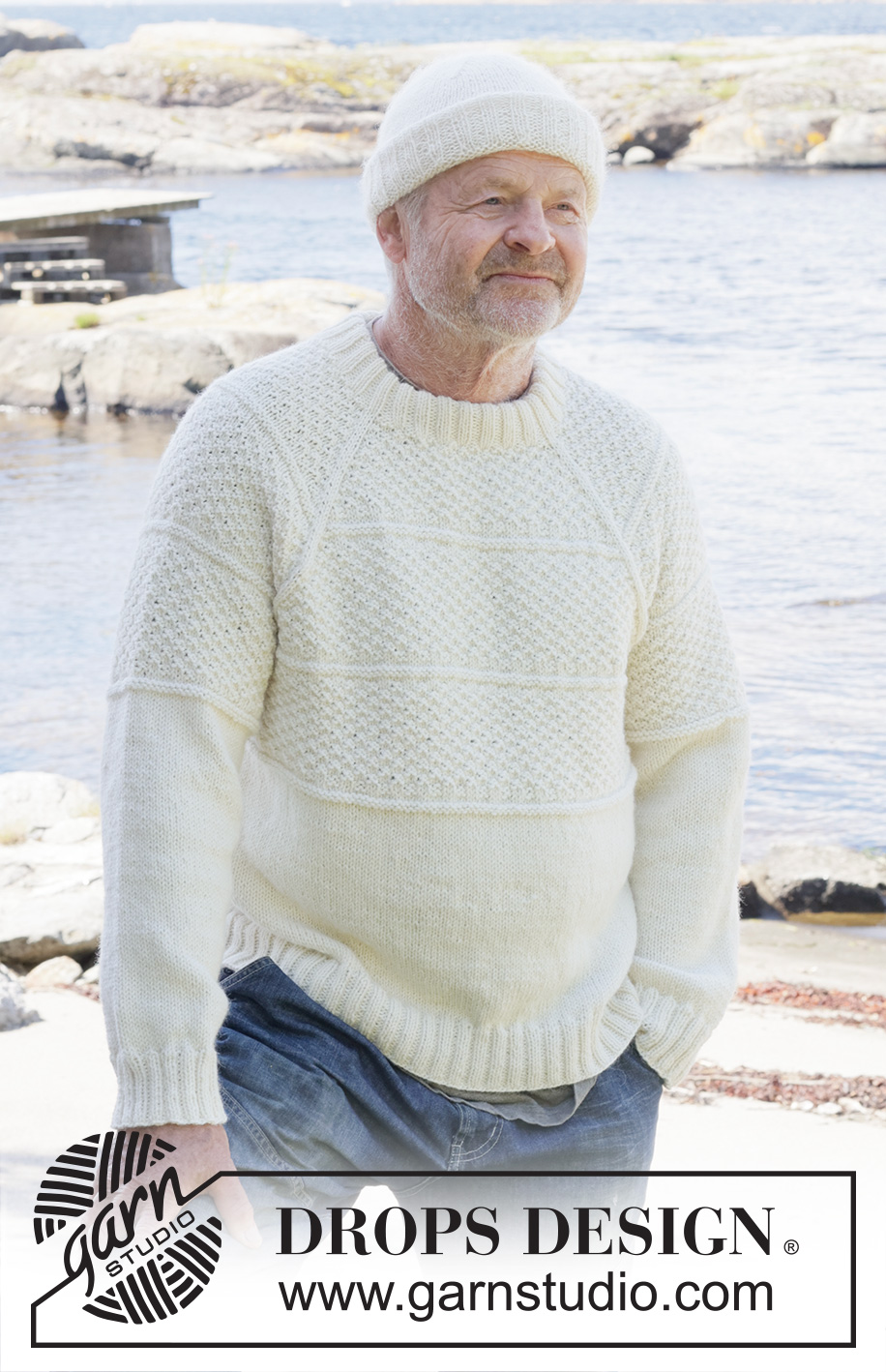
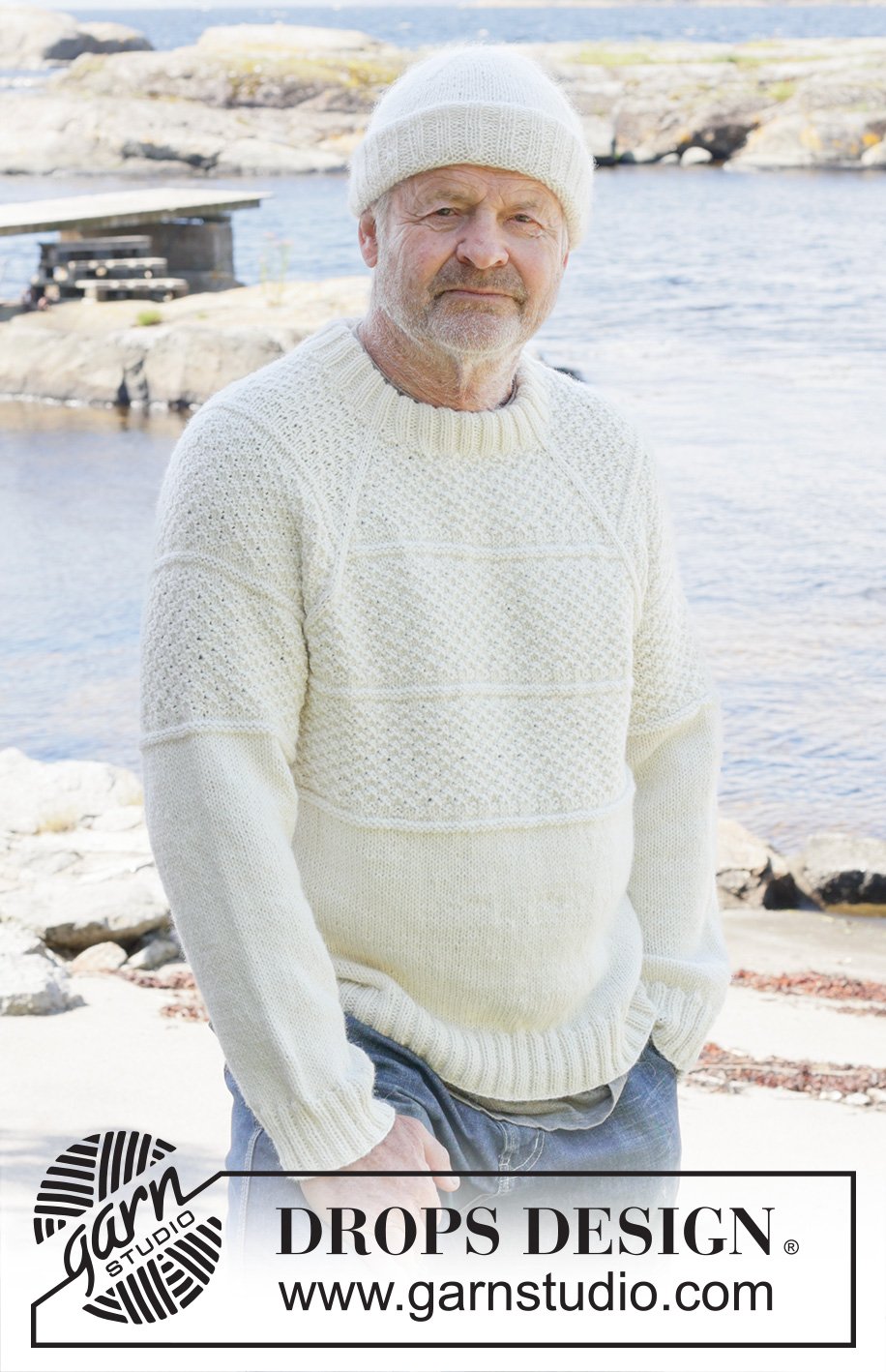


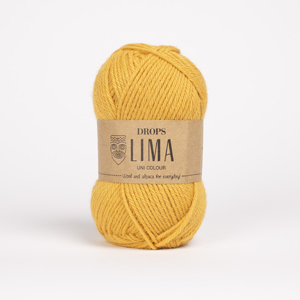
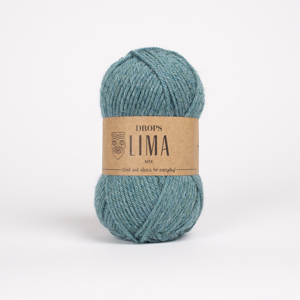

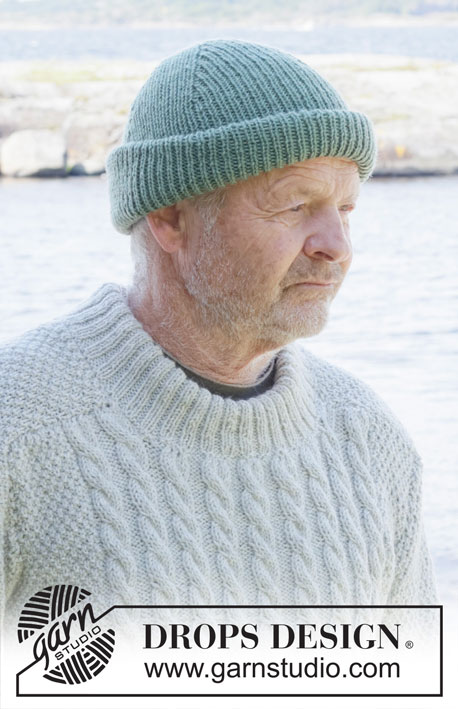



















































Post a comment to pattern DROPS 251-2
We would love to hear what you have to say about this pattern!
If you want to leave a question, please make sure you select the correct category in the form below, to speed up the answering process. Required fields are marked *.